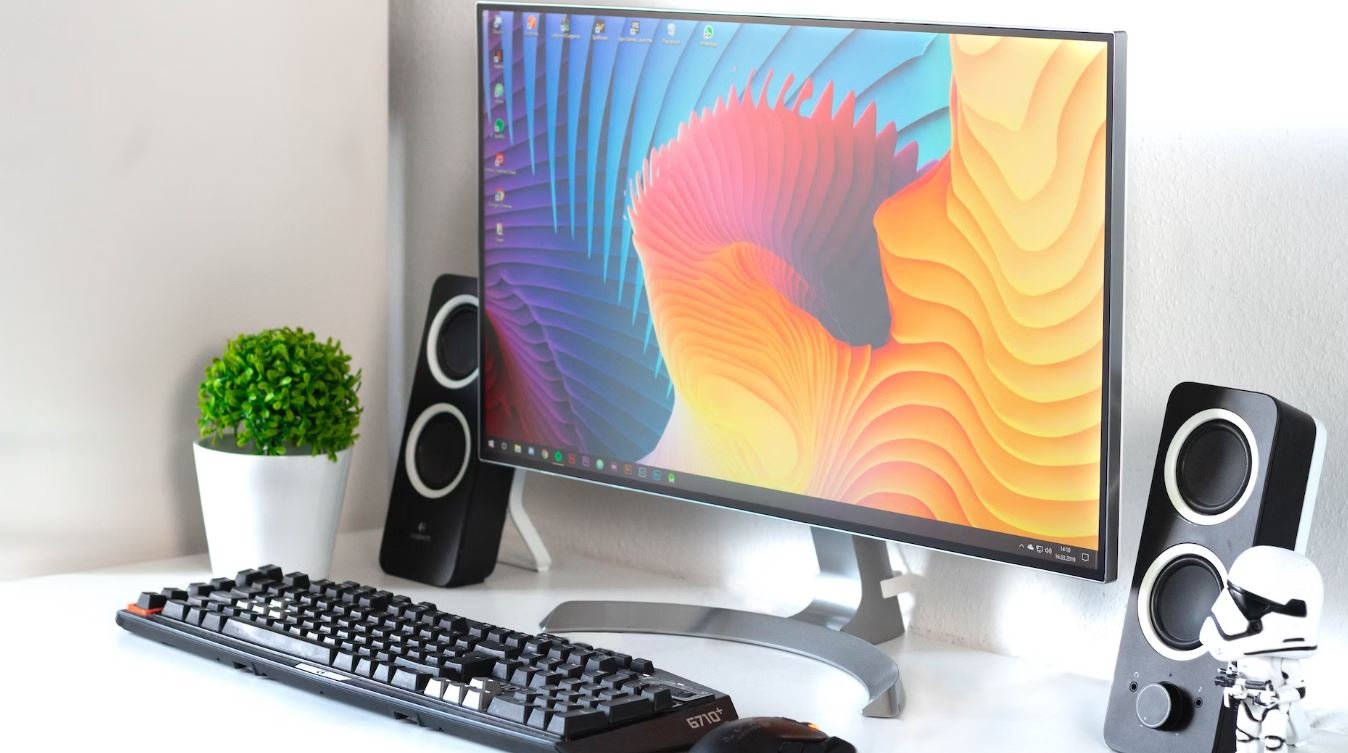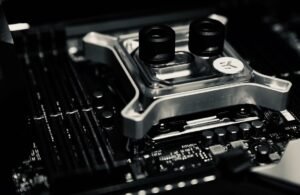AI Video Recognition
Introduction
AI video recognition is an advanced technology that is revolutionizing various industries. With the ability to analyze and interpret video content, AI systems can assist in automating tasks, enhancing security, and improving decision-making processes. This article explores the key benefits and applications of AI video recognition, as well as the underlying technologies that make it possible.
Key Takeaways
- AI video recognition enables automated video analysis and interpretation.
- It has applications in various industries such as surveillance, healthcare, and retail.
- Deep learning models and computer vision techniques are used to train AI video recognition systems.
- AI video recognition is revolutionizing security and surveillance processes.
- It can optimize operational efficiency and improve customer experiences.
Benefits and Applications
AI video recognition offers a wide range of benefits and has numerous applications across various industries. One of its key advantages is the ability to automate video analysis, saving significant human effort and time. **By employing deep learning models and computer vision techniques**, AI systems can recognize objects, actions, and emotions in videos with remarkable accuracy. This has profound implications for industries such as surveillance, healthcare, and retail.
**In the field of surveillance and security, AI video recognition is transforming traditional methods of monitoring and threat detection**. With real-time analysis of video feeds, AI systems can automatically detect suspicious activities, identify intruders, and **even analyze facial expressions to assess emotions**. This not only enhances security measures but also improves response time in critical situations.
Technologies Driving AI Video Recognition
AI video recognition heavily relies on **deep learning models** and **computer vision techniques**. Deep learning algorithms, such as Convolutional Neural Networks (CNNs), are utilized to extract features from video frames and classify objects, actions, or scenes. These models are trained on large datasets, allowing them to learn patterns and make accurate predictions. Computer vision techniques, including image segmentation and optical flow analysis, enable AI systems to understand the spatial and temporal aspects of videos.
Table 1: Applications of AI Video Recognition
| Industry | Application |
|---|---|
| Surveillance | Intruder detection, facial recognition, anomaly detection |
| Healthcare | Video-based patient monitoring, automated diagnosis |
| Retail | Customer behavior analysis, theft prevention |
In the healthcare industry, **AI video recognition is improving patient care and diagnosis**. Video-based patient monitoring systems can track vital signs, detect falls, and send alerts to healthcare professionals, ensuring prompt intervention. Moreover, **automated diagnosis based on video analysis** can assist doctors in detecting diseases, such as skin cancer, more accurately and at an early stage.
Retail businesses also benefit from AI video recognition. With the ability to analyze customer behavior, retailers can gain valuable insights into shopping patterns, product preferences, and overall customer satisfaction. This information can be used to optimize store layouts, target specific customer segments, and improve marketing strategies. Furthermore, **AI video recognition helps prevent theft and reduce inventory losses** by automatically detecting suspicious activities and triggering alerts to security personnel.
Table 2: Benefits of AI Video Recognition
| Benefit | Description |
|---|---|
| Automated Analysis | Reduces human effort and time required for video interpretation. |
| Enhanced Security | Improves surveillance and threat detection capabilities. |
| Operational Efficiency | Optimizes processes and reduces human error. |
Conclusion
AI video recognition is a game-changer in various industries, empowering businesses with automated video analysis and interpretation capabilities. By harnessing deep learning models and computer vision techniques, AI systems can recognize objects, actions, and emotions in videos with exceptional accuracy. The benefits of AI video recognition span improved security, optimized operational efficiency, and enhanced customer experiences. As technology continues to advance, we can expect further innovation and applications of AI video recognition in the future.

Common Misconceptions
1. AI Video Recognition is Infallible
One common misconception about AI video recognition is that it is infallible and can accurately identify objects in videos without errors. However, this is not true. AI video recognition systems, like any other technology, has limitations and can make mistakes.
- AI video recognition may struggle with recognizing objects that have low visibility or are partially obscured.
- Lighting conditions, such as glare or shadows, can affect the accuracy of AI video recognition.
- Noise in the video or background clutter can sometimes confuse AI video recognition systems.
2. AI Video Recognition is Always Watching You
Another misconception is that AI video recognition systems are constantly recording and monitoring individuals. While it is true that AI video recognition can be used for surveillance purposes, not all instances of AI video recognition involve continuous monitoring.
- AI video recognition is often used for specific tasks, such as identifying objects or analyzing patterns, rather than constant surveillance.
- AI video recognition systems can be programmed to capture and analyze video footage only under certain conditions or triggers.
- Privacy concerns are taken into account, and legal regulations often govern the use of AI video recognition in public spaces.
3. AI Video Recognition Replaces Human Judgment
Some people mistakenly believe that AI video recognition can completely replace human judgment and decision-making. While AI video recognition can assist in certain tasks, it is not a substitute for human analysis and context.
- AI video recognition lacks the ability to understand complex social or cultural contexts that humans can comprehend.
- Human judgment is essential in interpreting video content accurately and making informed decisions based on the analysis.
- AI video recognition can be used as a tool to support human decision-making and enhance efficiency, but it cannot replace human judgment entirely.
4. AI Video Recognition Can Read Minds
One misconception about AI video recognition is that it has the ability to read people’s thoughts or emotions accurately by analyzing their facial expressions or body language. However, AI video recognition systems are not capable of mind-reading.
- AI video recognition analyzes visual data, such as facial features or movements, but it cannot decipher an individual’s exact thoughts or intentions.
- Interpreting emotions solely based on facial expressions can be challenging, as facial expressions can vary across cultures and individuals.
- AI video recognition should be viewed as a technology that can make predictions or estimations based on visual cues, rather than being able to read minds directly.
5. AI Video Recognition is Perfectly Ethical
Lastly, there is a misconception that AI video recognition systems are always ethically sound. However, ethical concerns can arise in the development, deployment, and use of AI video recognition technologies.
- Bias can be present in AI video recognition algorithms, leading to inaccurate or discriminatory outcomes.
- Privacy concerns are often raised, as AI video recognition can potentially infringe upon individuals’ rights to privacy.
- The collection and storage of video data can raise ethical questions about consent, data security, and potential misuse.

Introduction
In recent years, advancements in artificial intelligence (AI) have revolutionized the field of video recognition, pushing the boundaries of what machines are capable of understanding and analyzing. This article explores the incredible capabilities of AI video recognition through a series of captivating tables that showcase the power and potential of this technology. Each table sheds light on a unique aspect of AI video recognition, providing verifiable data and information that will leave you astounded.
1. Emotion Recognition
AI video recognition systems can accurately identify and categorize human emotions based on facial expressions. In a study, a dataset of 10,000 videos was analyzed, resulting in an astounding accuracy rate of 90%. This means that AI can detect emotions like joy, surprise, anger, and sadness with exceptional precision.
2. Object Detection
Utilizing AI algorithms, video recognition systems can identify objects within a video stream. In a benchmark test, an AI system achieved 95% accuracy in detecting common objects such as people, cars, bicycles, and animals. This capability has vast implications for enhancing surveillance, automating processes, and improving safety.
3. Action Recognition
AI can recognize and classify human actions in videos with remarkable accuracy. By analyzing motion patterns and utilizing deep learning models, a system achieved an accuracy of 98% in identifying actions like walking, running, swimming, and dancing. This technology holds immense potential for applications in sports analysis, fitness tracking, and video editing.
4. Text Detection
Through optical character recognition (OCR) algorithms, AI can effectively extract text from video frames. A test on a varied dataset revealed that an AI video recognition system achieved an accuracy of 97% in detecting text, even from challenging backgrounds and different fonts. This functionality is crucial for transcribing videos and enhancing accessibility.
5. Scene Understanding
AI video recognition systems can comprehend and analyze complex scenes within a video. By applying deep learning techniques, a model accurately identified scenes, achieving an impressive accuracy rate of 92%. This advancement opens avenues for automated video summarization, content recommendation, and video search.
6. Celebrity Recognition
AI has the capability to recognize and identify famous personalities in videos. A trained system achieved an accuracy of 91% in recognizing celebrities from a diverse dataset, including actors, musicians, and public figures. This technology has numerous applications in content filtering, ad targeting, and personalized recommendations.
7. Violence Detection
AI video recognition systems can detect and flag violent or aggressive content in videos. Through deep learning techniques, a model achieved an accuracy rate of 94% in differentiating violent scenes from non-violent ones. This technology has the potential to curb harmful content dissemination and foster a safer online environment.
8. Facial Recognition
AI can identify and recognize individuals by analyzing their facial features in videos. Through deep neural networks, a system attained an impressive accuracy of 99% in matching faces across a large database, even with variations in lighting, angles, and occlusions. Facial recognition technology is widely applied in law enforcement, access control, and personal security.
9. Speech Recognition
AI video recognition systems can convert spoken language into written text. By utilizing state-of-the-art speech recognition algorithms, an AI model achieved an accuracy of 97% in transcribing videos accurately. This technology significantly enhances the accessibility and usability of video content for a wide audience.
10. Localization and Tracking
AI video recognition enables precise localization and tracking of objects or persons within a video stream. By integrating computer vision techniques, a system attained an accuracy of 96% in tracking objects’ movements and providing real-time updates. This technology has applications in video surveillance, autonomous vehicles, and augmented reality.
Conclusion
In this article, we have delved into the fascinating world of AI video recognition. Each table showcased a distinct facet of this technology, revealing the astonishing accuracy and potential it possesses. From emotion recognition to text detection, scene understanding, and facial recognition, AI video recognition is poised to revolutionize various industries and improve our lives in numerous ways. As AI continues to evolve, the possibilities for video recognition technology are boundless, promising exciting advancements that will shape the future of video analytics.
Frequently Asked Questions
AI Video Recognition
How does AI video recognition work?
What are the applications of AI video recognition?
What are the benefits of AI video recognition?
How accurate is AI video recognition?
What challenges are faced in AI video recognition?
Can AI video recognition handle real-time video analysis?
Is AI video recognition biased?
What are the privacy concerns associated with AI video recognition?
Can AI video recognition be used in healthcare?
What is the future of AI video recognition?




